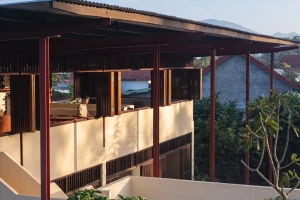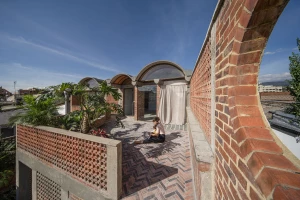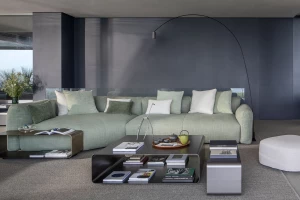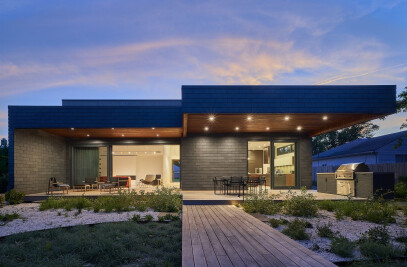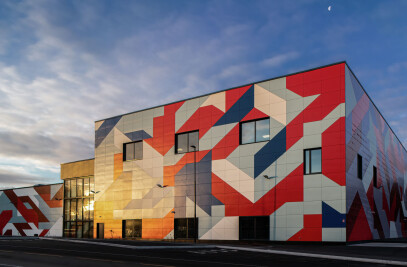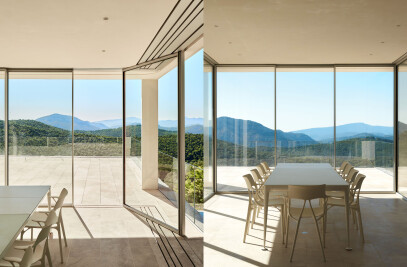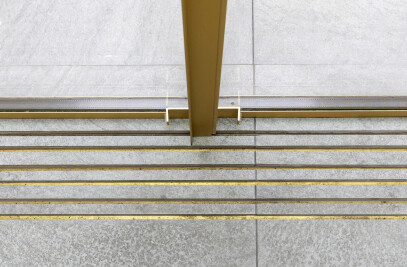Mumokuteki Concept Bookstore is a new idea proposed by client Juran Bookstore and executed by LUO Studio. The concept puts forward the possibility of creating a flexible and varying bookstore space that integrates with other various functions such as exhibitions. The distinctive bookstore is located in the underground space of a shopping mall in Beijing.

The architects explain that a suspended ceiling to conceal the pipework would lead to a more cramped, oppressive space. The team thus started from the idea of embracing the authenticity of the space by allowing the pipework to remain exposed. Alongside this columns and walls were restored to their original state, unveiling their pure, authentic spatial textures.

The white coating to the walls and columns was removed and irregular edges and corners polished, thereby revealing the aggregate textures in the concrete columns.

Metal shelving capable of adapting to change was a requirement of the client. As the walls are non-bearing hollow blocks, the width and height of the shelves were carefully considered with the load of the shelves directed to the ground through anchor points in the floor and the walls merely providing additional support.

Alongside this, rotating screen walls were inserted under beams as secondary structural components. As the rotating walls are set vertical and perpendicular to the entrance, the entire space becomes open and transparent. However, when parallel to the entrance, the space is divided into multiple continuous yet independent parts, which enrich the sense of layering and perceived depth of the space. The screen walls can rotate freely, resulting in a flexible and changeable space.
The framework of the rotating walls is riveted with angle steel profiles and is enveloped by transparent or translucent materials. Transparent rotating screen walls are deployed at the entrance ad the transition area leading to the rear zone for the continuity of the space, while translucent walls are set in other areas to enrich the space.

Holes are carved out on both sides of the screen walls based on module specifications for allowing wood bars to pass through. A number of metal plates are flexibly set on the wooden bars at different heights, so as to meet the needs of hanging and spacing books and cultural/creative products.















